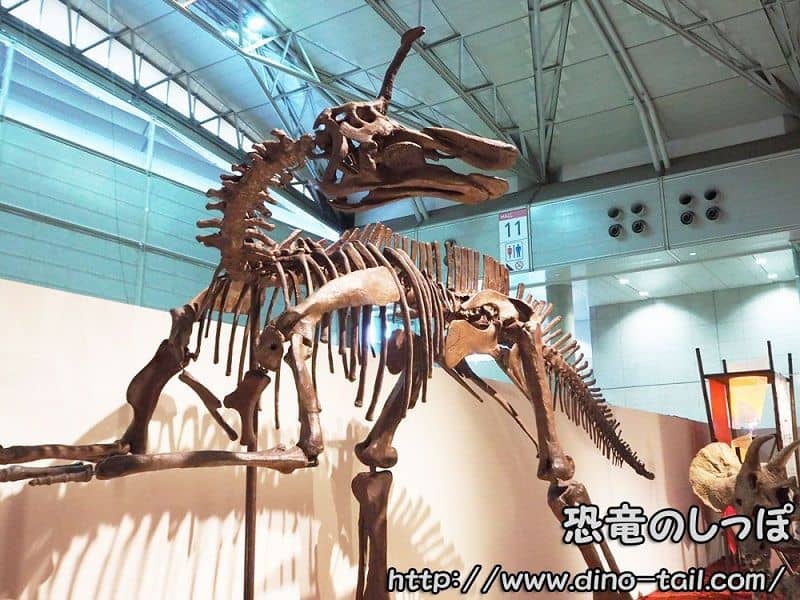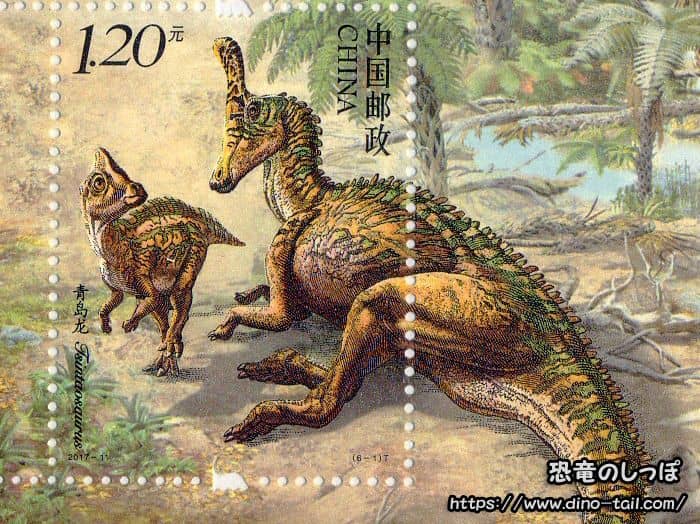About Tsintaosaurus
| Scientific Name (Genus) | Tsintaosaurus |
| Meaning of Name |
Lizard from Qingdao (a city in China)
Tsintao (Qingdao) [place name] - sauros (lizard) [Greek] |
| Classification | Ornithischia, Ornithopoda (Hadrosauridae, Lambeosaurinae) |
| Total Length | Approx. 10m |
| Diet | Herbivorous |
| Period | Late Cretaceous (approx. 70 million years ago) |
| Sub-classification/Species |
Tsintaosaurus spinorhinus
*The species name spinorhinus means 'nose spine,' derived from the initial misunderstanding. |
| Year of Paper Publication | 1958 |
| Publication |
The dinosaurian remains of Laiyang, Shantung.
Palaeontologia Sinica, New Series C. Whole Number. 42. by Chung Chien Yang. 1958. |
Features: The True Identity of the Unicorn Horn
For many years, Tsintaosaurus was known as the "unicorn dinosaur" because of its strange head projection. However, a groundbreaking study published in 2013 revealed that its appearance was completely different.
Why the Misconception?
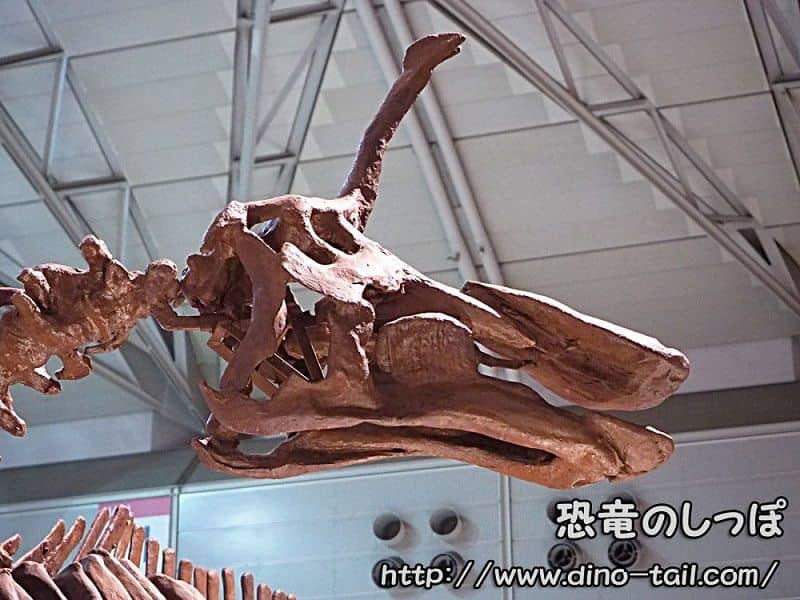
The first discovered Tsintaosaurus skull was damaged by pressure during the fossilization process. As a result, a part of the bone that should have connected from the snout to the back of the head was broken and ended up pointing straight up, just like a unicorn's horn . Based on this reconstruction, it was depicted as a strange, single-horned dinosaur for many years.
The True Appearance and Function of the Crest
In 2013, paleontologist Dr. Albert Prieto-Márquez and his colleagues re-examined newly found skulls and existing fossils using CT scans. Their results showed that the "single horn" was actually part of a much larger, more complex, hollow crest similar to that of Parasaurolophus (specifically, the rear portion).
Based on this new reconstruction, the crest of Tsintaosaurus was connected to the nasal passages and is thought to have been used for communication with other members of its species by resonating loud sounds when air was blown through it. Its unique shape would also have played an important role in display, for identifying members of its species and attracting mates.

The Tsintaosaurus Damaged in the Great East Japan Earthquake
On March 11, 2011, the Great East Japan Earthquake caused immense damage, mainly in the Tohoku region.
A full-body replica skeleton of Tsintaosaurus was on display in the lobby of the town hall in Hirono, Fukushima Prefecture, located within 30 km of the Fukushima Daiichi Nuclear Power Plant.
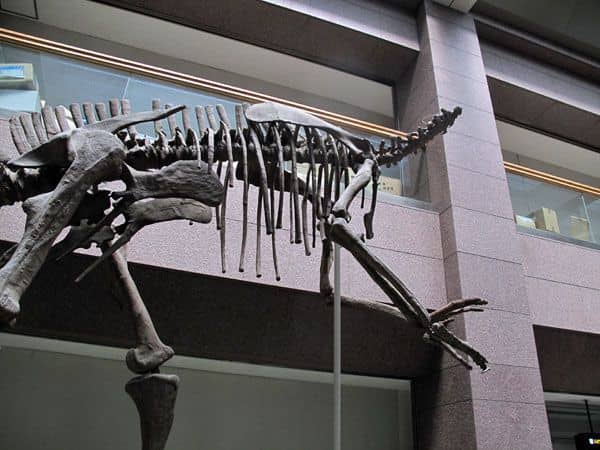
Because rock layers from about 88 million years ago (Late Cretaceous) are exposed in Hirono, the skeleton had been displayed in the town hall lobby since 1988 to promote the area as a "fossil" locality.
The cost to restore the damaged replica was about 4 million yen. In 2015, funds were raised through crowdfunding (I also contributed 10,000 yen), and the restoration work was carried out.
The revitalized (?) Tsintaosaurus toured the "Dinosaur Expo 2016" (Tokyo and Osaka) the following year before returning to Hirono, Fukushima Prefecture.
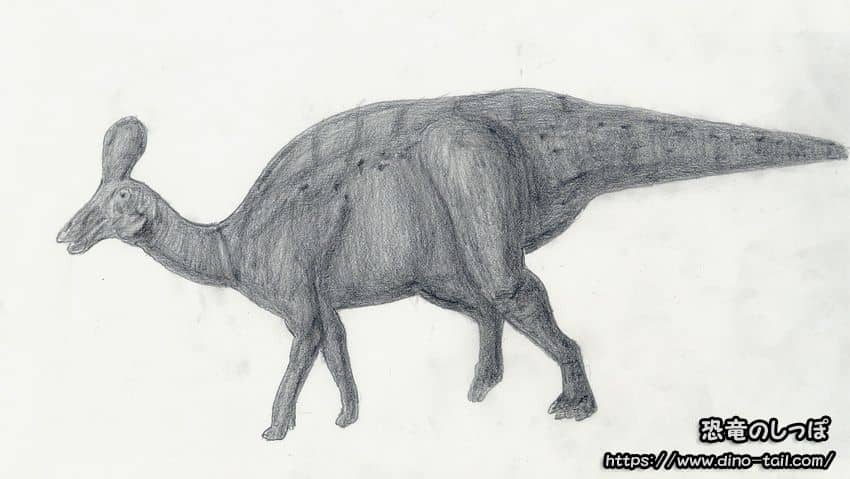
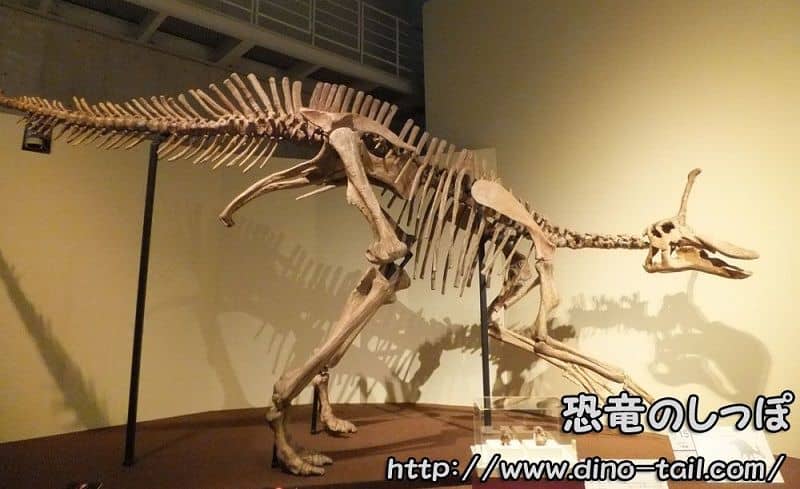
The restored Tsintaosaurus toured the "Dinosaur Expo 2016."
Tsintaosaurus Stamp and Fossil Gallery
